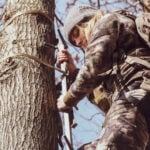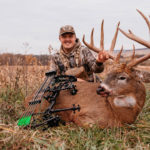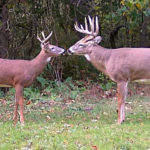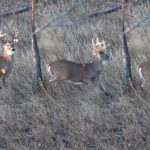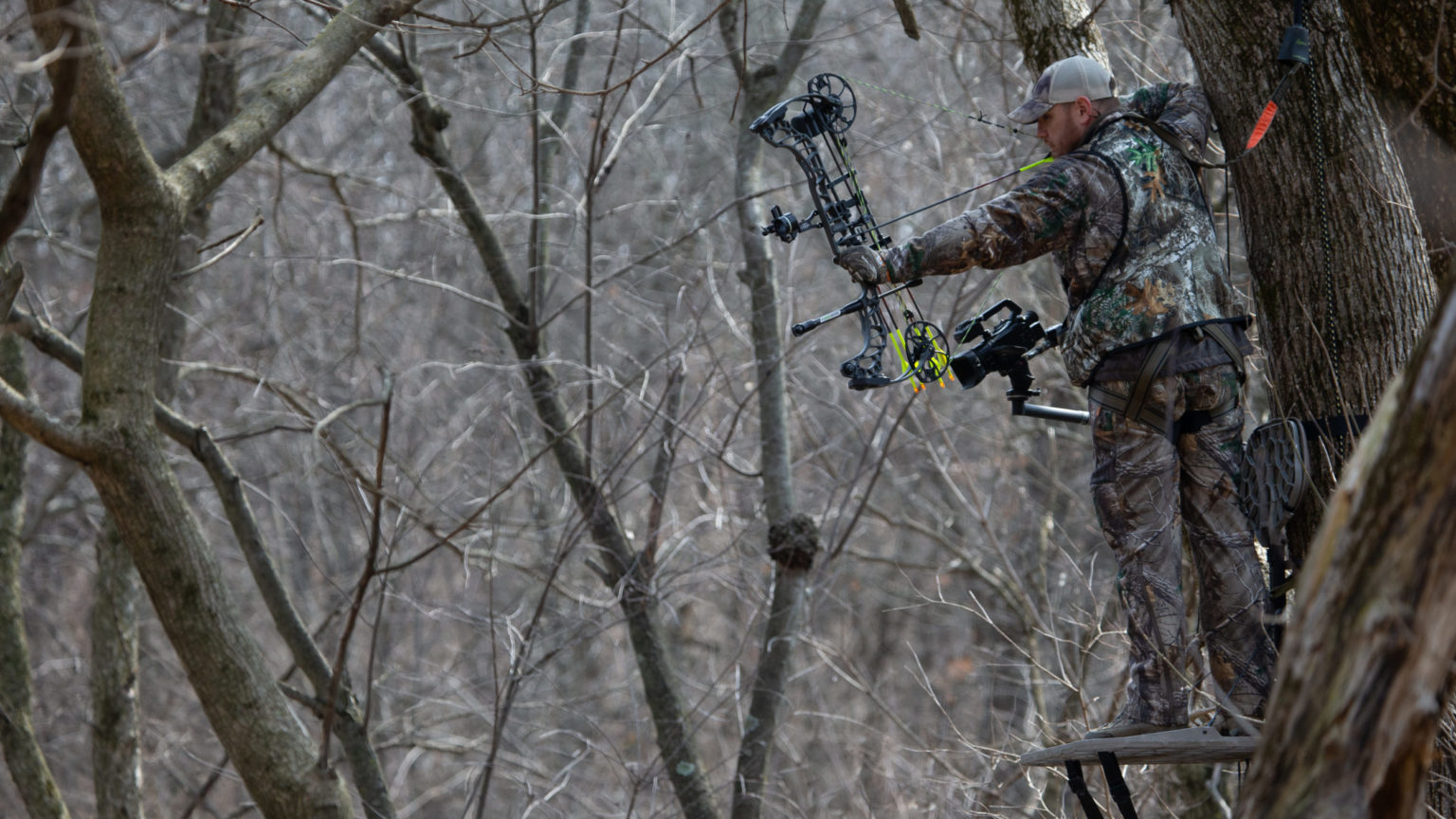
The rut is the one time each season when bucks leave their safe zones – the places where they know the curve of every branch and the smell of every turd.
Suddenly they are in situations where they don’t always have the upper hand. Throw in a little testosterone and they are not only in unfamiliar settings but are moving more than usual.
In other words, for a couple of weeks each season they actually become vulnerable. They may even make mistakes. This, of course, is why the rut is the most exciting time to be in the woods.
Believe it or not, the rut also has a downside. When bucks are on the move looking for does they become extremely unpredictable. All the time you put in scouting for rub lines and scrape lines and licking branches and breeding hubs, and all that other neat textbook buck sign is of very little value when bucks are walking helter-skelter through the woods.
Trying to hunt a buck by focusing on sign becomes a waste of time. This can be especially frustrating if you’re hunting one particular animal. How can you figure out where he’s going to be next when he doesn’t even know himself?
It’s easy to be lured into making a common mistake. You see a big rub or a big scrape and right away you’re convinced that the big buck you saw back in August is the one that made it.
Maybe he did, maybe he didn’t. The buck you are hunting may have been there all summer and early fall, but he could be miles away now. When they’re on the move like this they couldn’t care less about freshening “their” scrapes or using a rub line, so trying to pattern a buck during the peak of the rut complicates things needlessly.
In fact, such an effort actually works against you because it puts you in stands that aren’t well located based on what the majority of bucks are actually doing.
Unless you’re hunting in an area with a really low deer density (in the range of 5 to 10 deer per square mile) there are usually too many bucks around to determine who made what sign. And, even if it was your buck that made the sign, what makes you think that he’s still around? Up goes the stand, and down goes your success rate. The only thing holding such a strategy together is a thin strand of pure luck.
It Seems so Easy
Many rut hunters never get past this stage because sometimes luck is enough. Give me a beginner and a week of vacation during the peak of the rut and seven days later I’ll show you a fellow posing for a grip and grin photo.
When you look at how many novices take big bucks during the rut it would seem on the surface that any plan is just as good as the next. I conducted so many big buck interviews in the early 90’s in which beginning hunters took world-class bucks that I started to get caught up in that thinking myself.
It took a few washout seasons before I realized that it only works if you’re a beginner. The gods of the hunt seem to smile most brightly on those just starting out.
To be consistently successful during the rut, you have to think about your hunting strategy based on a long-term approach. You are rewarded for hunting smart – maybe not every day of the season – but your consistency year-after-year will definitely improve.
There really aren’t very many aspects of buck behavior that you can count on during the rut, so you need to take maximum advantage of the few that do exist. Granted, none of this is rocket science, but sometimes simplicity is at the heart of genius.
Ok, enough hunting philosophy. It’s time to get down to the business of mapping out a simple rut hunting strategy that you can trust. Since I’ve already kicked sand in the faces of hunters who try to focus on sign during the rut, I’d better offer a worthy alternative.
Again, we can’t count on absolutes because bucks are unpredictable and roaming outside their normal core areas. Instead, we have to focus on tendencies. This is the best possible way to play the odds.
There are two tendencies that almost all bucks share during the rut. Knowing what they are and how to use that information when setting stands is at the heart of an organized rut hunting game plan.
Two Tendencies of Rutting Bucks
Bucks look for does. Don’t take a stand unless there’s a strong reason that a buck out looking for a doe would come past. Common sense is all you need to find these places.
It is a simple mindset that cuts through all the noise and confusion associated with the rut. Would a buck looking for a doe come past here or not? It is a simple question you should ask yourself each time you are tempted to put up a stand. You’ll be surprised by how quickly you can eliminate most of your hunting area.
Here are a few examples. Suppose you’re looking at a big scrape located in a ravine near a bedding ridge. Will a buck looking for does come past this spot? Not necessarily – in fact, probably not.
They don’t visit their scrapes with any kind of regularity when does are close to breeding or when they are actually breeding – at least not the mature bucks. We can eliminate almost all scrape hunting (except well before does are ready to breed) by applying this simple condition.
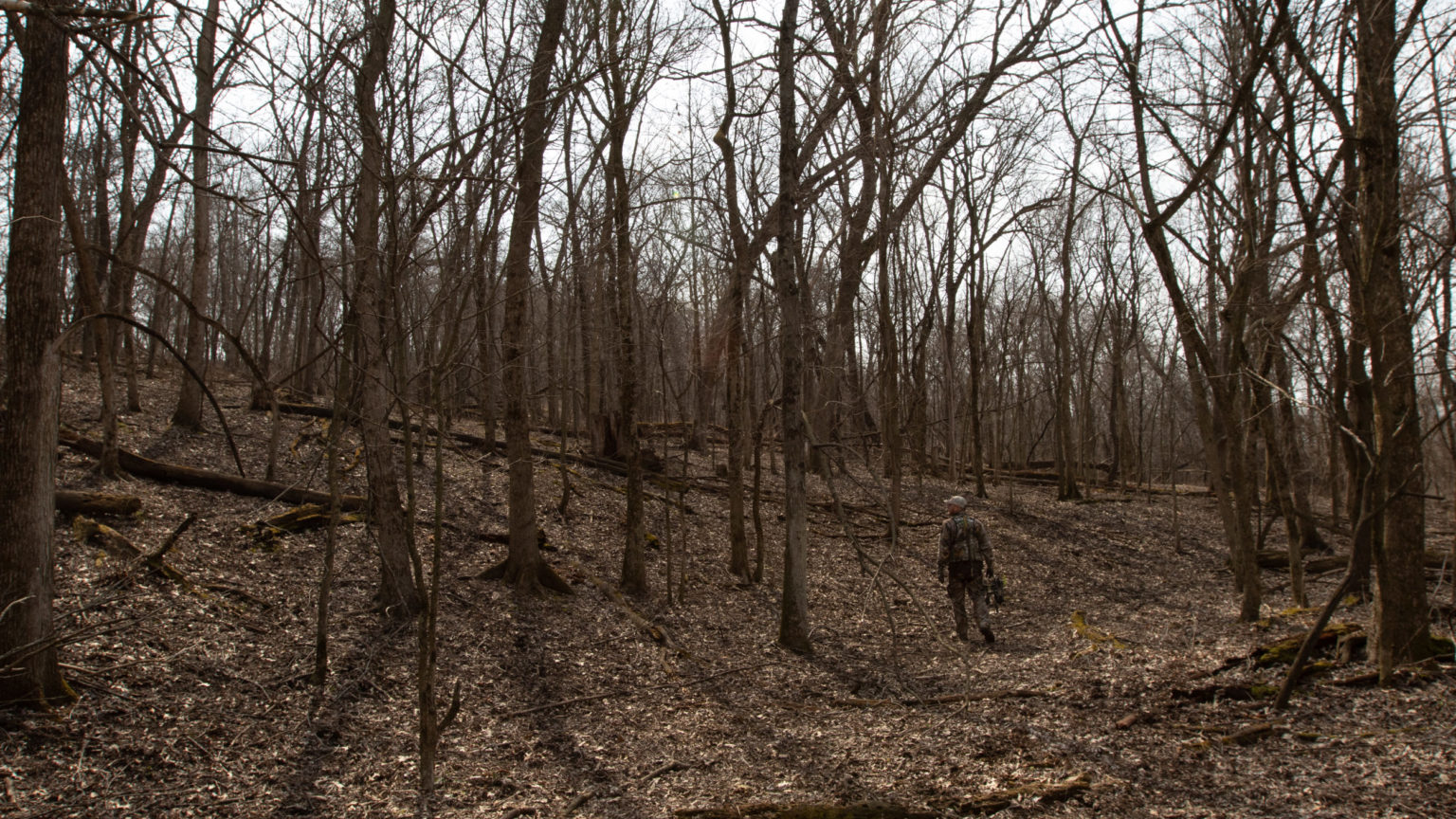
Now for a couple of better choices: stands located between two bedding areas used by does are good locations. Stands located near areas where does feed will be productive in the evenings. And stands located near doe bedding areas themselves will pay off in the mornings. If you were trying to find a doe, where would you go and how would you get there? That’s where you need to hunt.
Bucks keep a low profile: Once you know the buck’s Point A and Pont B, you need to consider how he chooses his path as he travels between. Two factors have the most influence: the buck’s desire to keep a low profile and his desire to take the path of least resistance. When hunting pressure isn’t heavy a buck will try to accomplish both of these goals every time he sets foot from his bed. (Where hunting pressure is heavy he most often adjusts by simply staying in his bed until after dark.)
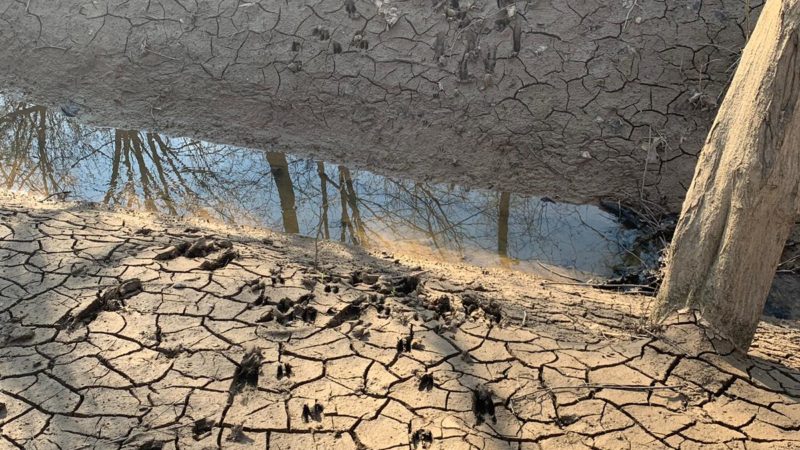
Terrain and cover often dictate these low profile low effort travel routes. Terrain-related travel routes include saddles, swales in open fields, shallow water creek crossings and draws leading out of heavy timber into a feeding area. One of my favorite setups occurs when a deep erosion ditch cuts into a timbered slope. Typically these ditches are found in draws between two ridges.
Since does love to bed on ridges, you’ve got your Point A and Point B. Bucks traveling between these bedding areas aren’t likely to cross the steepest or deepest portions of the ditch, but they will go around it. Another example is a creek crossing in a valley between two bedding ridges. When the wind is right these are also great terrain-related funnels.
Now you’ve got your stand location. There may not be a scrape within a mile, but either of these is a strong setup during the rut – especially during morning hunts when bucks are most actively cruising through bedding areas.
Cover also dictates how bucks move. Two or my largest bucks have come from a stand located in a narrow finger of timber and brush that bucks use like a highway when crossing otherwise open country. Cover-related travel routes aren’t always the classic hourglass bottlenecks that you read so much about.
They can also include break lines where open cover and thick cover meet and brushy fence lines spanning open fields. Other great spots include inside corners (where an open field makes a corner back in the timber) and fingers of cover pointing at each other from opposing sides of an open ridge top.
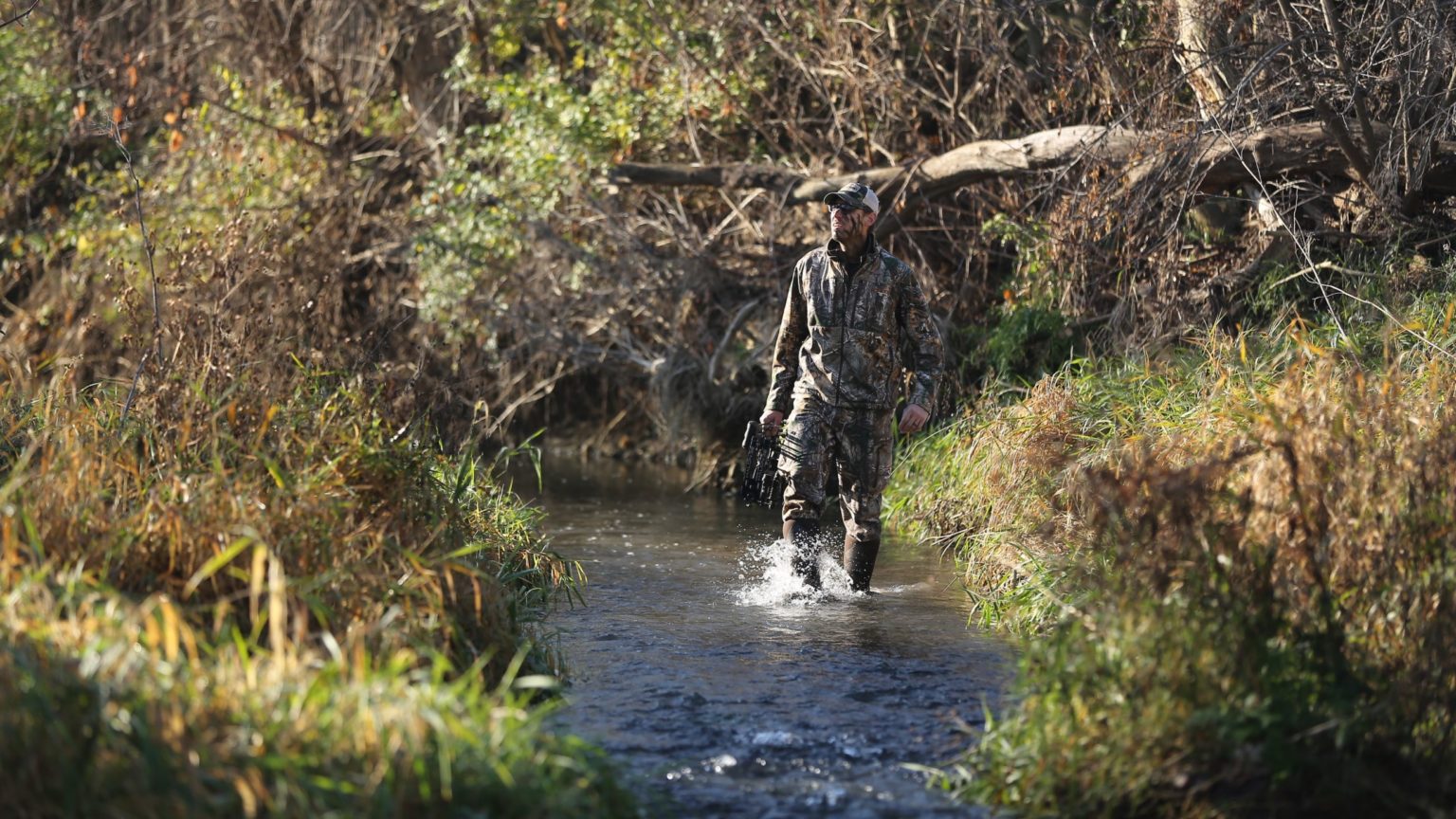
Putting it Together
The rut technically has three phases and starts well before the bucks first start chasing does. But this article deals primarily with the most easily identified of all rut phases: the hectic time we know as the peak of the rut. When you see bucks first start to aggressively chase does you know it has begun. This unpredictable portion of the season will last until the majority of the does are bred.
Early in this phase you’ll often see bucks hounding does until the doe stops to urinate. The buck will smell the spot on the ground. Depending on what he smells he will either drift off in another direction looking for a better candidate (if she is far from estrous) or he will continue to hound her.
Of course, when does start to come into estrous full scale the chasing and random movement becomes even more pronounced. One more time: when you start to see bucks chasing, it’s time to start focusing your hunting strategies on the does.
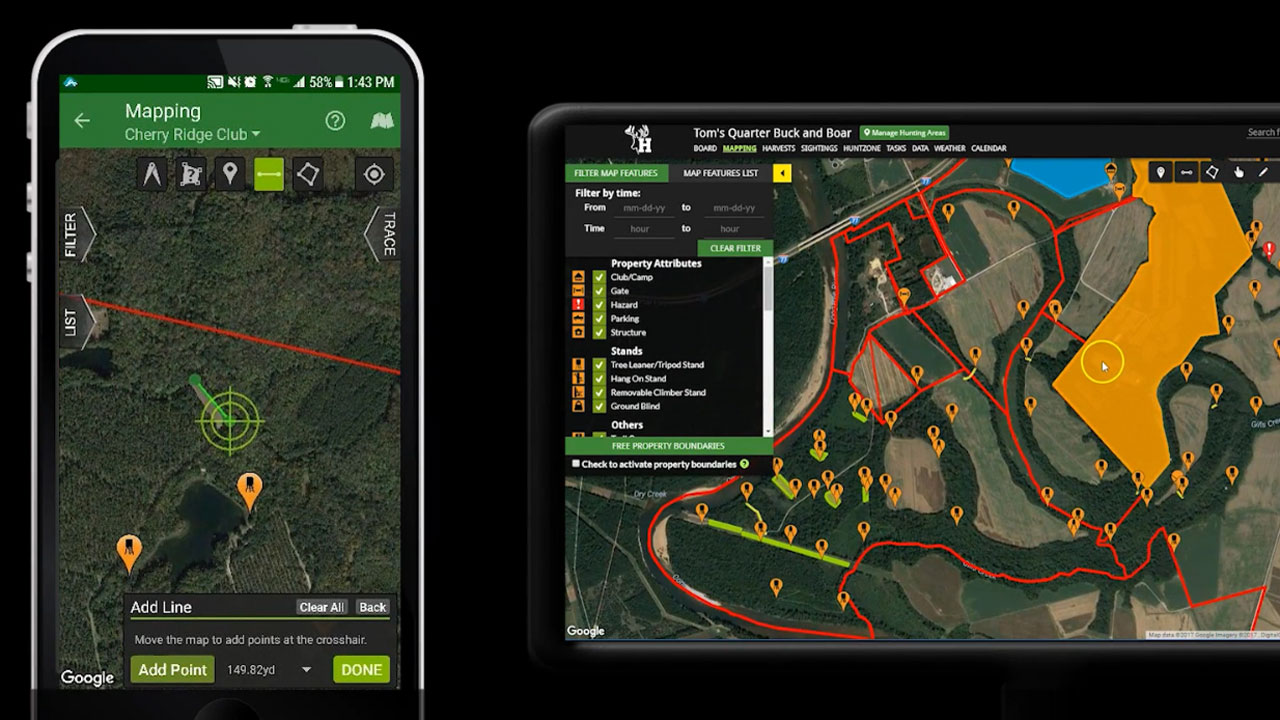
Morning strategies: I spend nearly every morning during the rut hunting the edge of doe bedding areas. I’ll have as many as five different stands in as many different bedding areas that allow me to spread out my pressure. This strategy paid off again during the 1999 season.
Despite record warm temperatures, I was able to get within bow range of a dandy eight-pointer. He was just moseying through looking for does and when I grunted at him with my mouth. I was actually trying to stop him for the shot but when he froze and looked my way there was too much brush to permit the 30-yard shot. Believe it or not, he actually turned and began walking my way!
Normally, I’ve had poor success trying to grunt to animals that are close. Usually it just scares them, but maybe he thought the sound had come from the other side of the ridge. He walked right past my tree at only 10 yards.
In the mornings, I definitely favor doe bedding areas. Bucks will be active in these areas for several hours each morning as they look for does.
The action continues until the temperature starts to warm up – usually late in the morning. The downside of hunting bedding areas is the increased likelihood that you will educate too many does and ruin your hunting area. If the does leave, the bucks will quickly stop coming too.
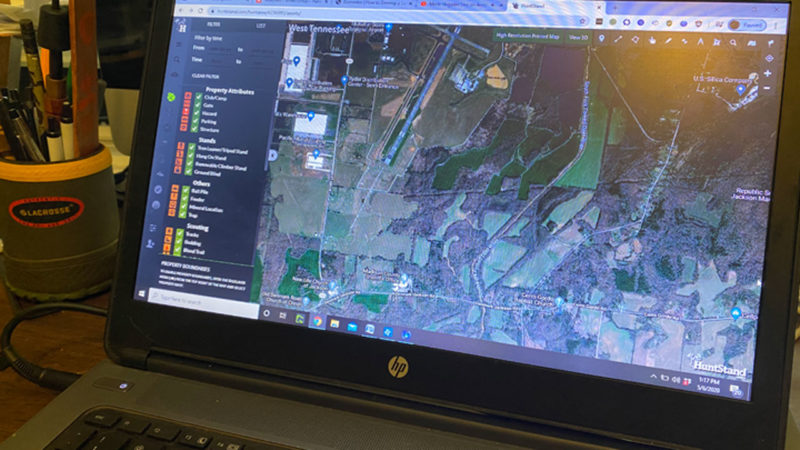
Only hunt those bedding areas that set up perfectly. You want to be able to hunt the downwind fringe in a location where you can take advantage of ditches or draws to access the stand from the direction opposite the primary feeding area. It’s important that you be able to get in and out without being detected.
As you can see, this becomes a bit of a delicate operation and not all bedding areas set up properly. You may have to walk away from a few because most hunting properties aren’t so big that you can afford to spook deer out of their bedding areas.
Bucks tend to move randomly through a bedding area, but there are a few things you can look for to concentrate them. The ridge top spot where I took the buck in 1999 had a narrow draw that I used to walk right to the base of the tree.
The draw also served to slightly concentrate deer toward the top of the ridge. Sometimes it just takes time and observation to find where the majority of the deer move. You can anticipate these places by focusing on narrow sections on a ridge top (deer bed heavily on ridges) where cruising bucks will be more concentrated.
If you can’t find a foolproof setup near a bedding area, there is a second strategy that also produces great action. As mentioned previously, stands found between two bedding areas will receive plenty of buck traffic, and they are a lot easier to get to and from without spooking deer.
Bucks tend to move randomly between bedding areas, so focus on any natural travel funnels created by terrain and cover – anything that will bump them your way. Even though you may not find much buck sign, trust these stand locations because they are some of the best during the rut.
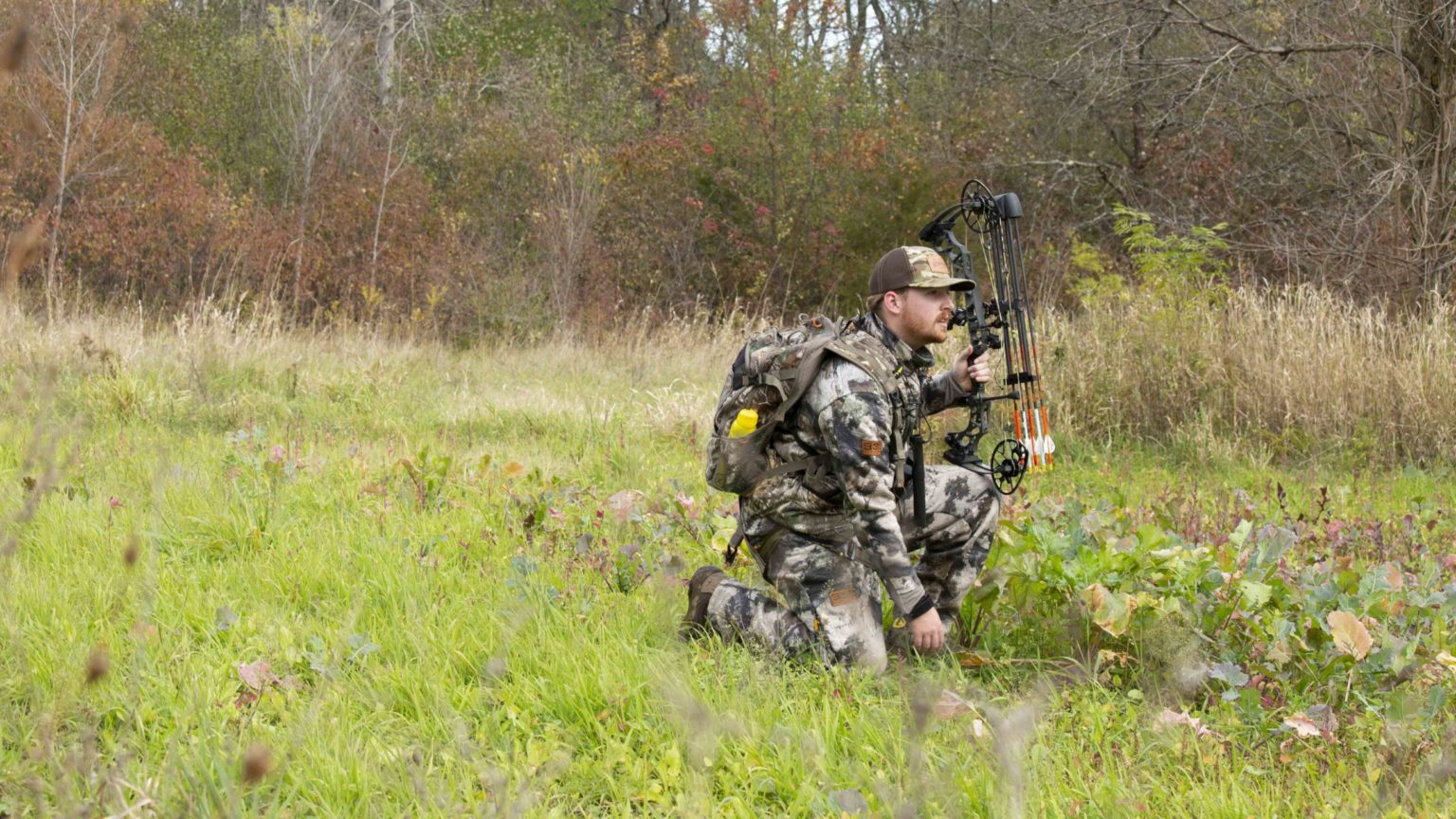
Evening strategies: When bucks are chasing does there’s no better afternoon stand location than one found near a feeding area used heavily by does. As the rut goes on, however, constant harassment from every buck in the area drives does undercover.
Eventually the action around the feeding areas will go down as a result. But, usually you have about a week before this happens.
Try to set up back in the cover a short distance from the edge in a location that allows you to cover three travel patterns. Ideally, you want to be able to shoot to at least one primary trail leading into the feeding area as well as travel routes found on both the inside and the outside edge of the cover.
Bucks like to cut trails leading in and out of feeding areas to determine if a hot doe has passed, making it worth your while to find a stand that also covers these perpendicular travel patterns. Usually, the “inside trail” will be about 30 yards from the edge of the timber.
The “outside trail” will be little less defined but fairly close to the cover on the field side. Bucks are less likely to use the outside trail, so if you can’t find a spot where you can shoot to all three from one stand, focus on the two trails found inside the cover.
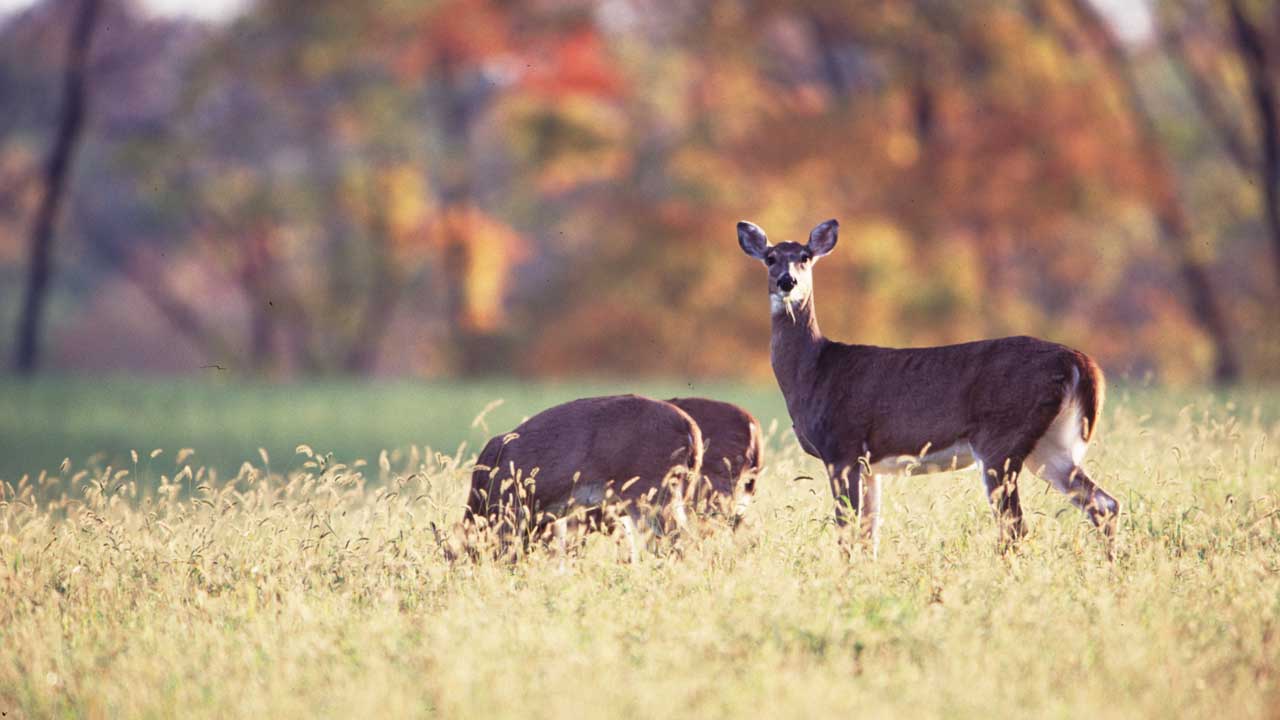
Small feeding areas are better than big ones because the activity will be concentrated. I’ve sat on 40-acre bean fields and watched bucks chasing does a quarter of a mile away, but that did me little good. I’ve also sat on one-acre clover patches nestled back in the timber. Everything was right in my pocket.
If you’ve found yourself confused about the best way to hunt the unpredictable rut, you may be too focused on buck sign. Forget about trying to piece together complex patterns from sign made by a buck that could now be miles away.
Keep things simple. Stick with stands that cover the most basic tendencies that all bucks share and your rut strategies will suddenly become a lot clearer, a lot easier to trust and a lot more productive.

